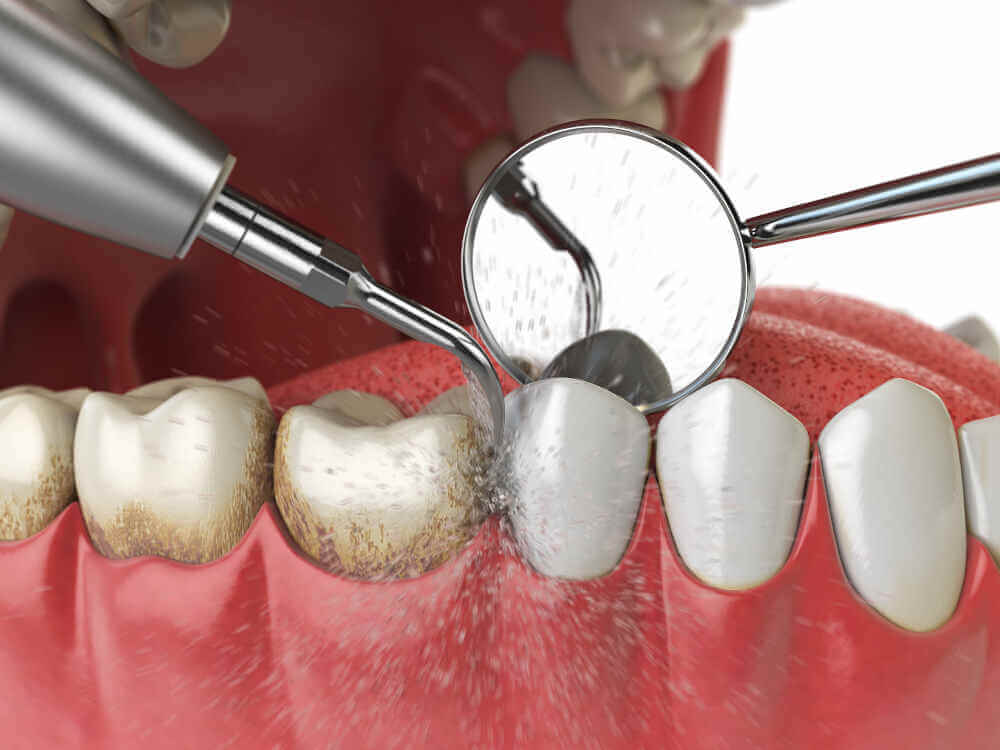
Periodontal diseases are infections of the gums, which gradually destroy the support of your natural teeth.
There are numerous disease entities requiring different treatment approaches. Dental plaque is the primary cause of gum disease in genetically susceptible individuals. Daily brushing and flossing will prevent most periodontal conditions.
Periodontal diseases can be accelerated by a number of different factors. However, it is mainly caused by the bacteria found in dental plaque, a sticky colorless film that constantly forms on your teeth. If not carefully removed by daily brushing and flossing, plaque hardens into a rough, porous substance known as calculus (or tartar).
Other important factors affecting the health of your gums include:
• Smoking
• Diabetes
• Stress
• Clenching and grinding teeth
• Medications
• Poor nutrition
Periodontal Disease
Bacteria found in plaque produces toxins or poisons that irritate the gums, which may cause them to turn red, swell, and bleed easily. If this irritation is prolonged, the gums separate from the teeth, causing pockets (spaces) to form. As periodontal diseases progress, the supporting gum tissue and bone that holds teeth in place deteriorates. If left untreated, this leads to tooth loss.
Preventing Gum Disease
The best way to prevent gum disease is effective daily brushing and flossing as well as regular professional examinations and cleanings. Unfortunately, even with the most diligent home dental care, people still can develop some form of periodontal disease. Once this disease starts, professional intervention is necessary to prevent its progress.
Scaling and Root Planning
Scaling and root planing is a deep cleaning below the gumline used to treat gum disease.
Gum disease is caused by a sticky film of bacteria called plaque. Plaque is always forming on your teeth, but if they aren’t cleaned well, the bacteria in plaque can cause your gums to become inflamed. When this happens, your gums will pull away from your teeth and form spaces called pockets. Plaque then gets trapped in these pockets and cannot be removed with regular brushing. If untreated, gum disease could lead to bone and tooth loss.
If gum disease is caught early and hasn’t damaged the structures below the gum line, a professional cleaning should do. If the pockets between your gums and teeth are too deep, however, scaling and root planing may be needed.
A July 2015 study in the Journal of the American Dental Association finds that scaling and root planing are beneficial to patients with chronic periodontitis (gum disease that has advanced past gingivitis). Chronic periodontitis affects 47.2% of adults over 30 in the United States.
What Happens During Scaling and Root Planing?
This deep cleaning has two parts. Scaling is when your dentist removes all the plaque and tartar (hardened plaque) above and below the gumline, making sure to clean all the way down to the bottom of the pocket. Your dentist will then begin root planing, smoothing out your teeth roots to help your gums reattach to your teeth. Scaling and root planing may take more than one visit to complete and may require a local anesthetic.
After Care Tips
After a deep cleaning, you may have pain for a day or two and teeth sensitivity for up to a week. Your gums also may be swollen, feel tender, and bleed.
To prevent infection, control pain, or help you heal, your dentist may prescribe a pill or mouth rinse. Your dentist may also insert medication (subantimicrobial-dose doxycycline) directly into the pocket that was cleaned.
Your dentist will schedule another visit to see how your gums have healed and measure the depth of your pockets. If they have gotten deeper, more treatment may be needed.
Good dental care at home is essential to help keep gum disease from becoming more serious or recurring. Brush your teeth twice a day with a soft brush, clean between your teeth daily, eat a balanced diet, avoid using tobacco, and see your dentist regularly.
Call (641) 424-9398 to schedule an appointment with Dr. Noemi Cruz-Orcutt at Mint Springs Dentistry in Mason City, IA.
Copyright © 2024 Mint Springs Dentistry. All Rights Reserved.